Choosing the Perfect TPE Yoga Mat for Your Practice
Make the Switch to TPE Yoga Mats and Feel the Difference
Alias: Eco-friendly yoga mat, TPE exercise mat, TPE fitness mat, TPE workout mat, TPE Pilates mat, thermoplastic elastomer yoga mat, non-toxic yoga mat, environmentally friendly yoga mat.
Introduction
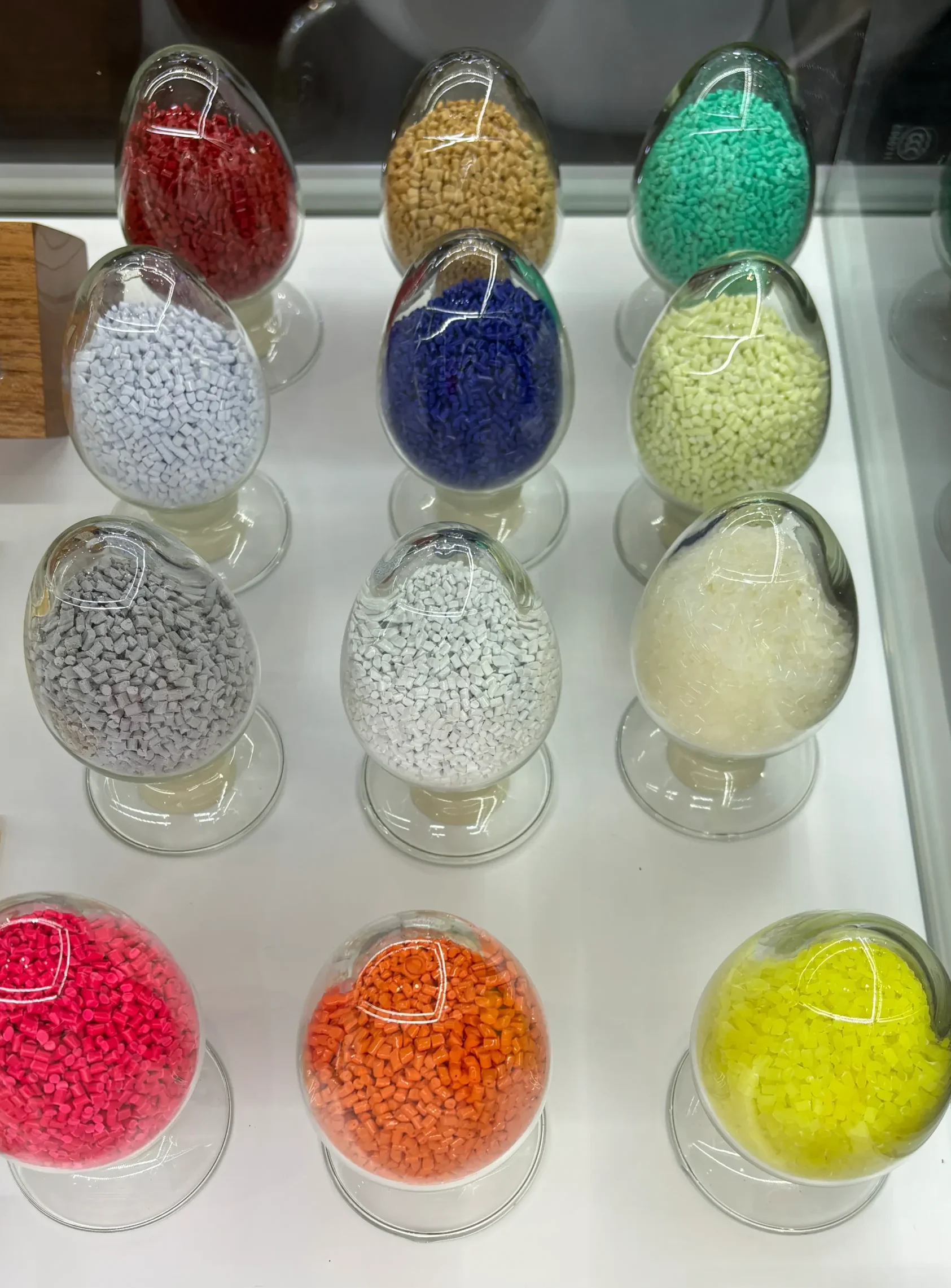
TPE (Thermoplastic Elastomer) is a versatile material known for its eco-friendliness, non-toxicity, recyclability, and excellent durability and cushioning, making it ideal for yoga mats and other fitness equipment.
Yoga, an ancient practice originating in India, has gained immense popularity worldwide for its numerous physical, mental, and spiritual benefits. From enhancing flexibility and strength to promoting relaxation and mindfulness, yoga offers a holistic approach to well-being. However, to fully experience the benefits of yoga, having the right equipment is essential, and a good yoga mat tops the list.
A yoga mat provides the necessary support and cushioning for various poses, helping to prevent injuries and ensure comfort during practice. With the market flooded with various types of yoga mats made from different materials, choosing the right one can be overwhelming. Enter TPE yoga mats – an innovative and eco-friendly option that stands out for its exceptional qualities.
TPE, or Thermoplastic Elastomers, are a unique blend of polymers that offer the perfect balance of flexibility, durability, and environmental sustainability. Unlike traditional PVC or rubber mats, TPE yoga mats are free from harmful chemicals and are fully recyclable, making them an excellent choice for both practitioners and the planet.
TPEs exhibit the flexibility and elasticity of rubber while maintaining the processing ease of plastics. This unique combination makes TPE an ideal material for various applications, including yoga mats.
What is TPE?
Definition of TPE
TPEs are composed of a blend of polymers that can be molded and shaped when heated, much like traditional plastics. However, once cooled, they regain their elastic properties, similar to rubber. This process can be repeated multiple times without significant degradation, making TPE a versatile and durable material.
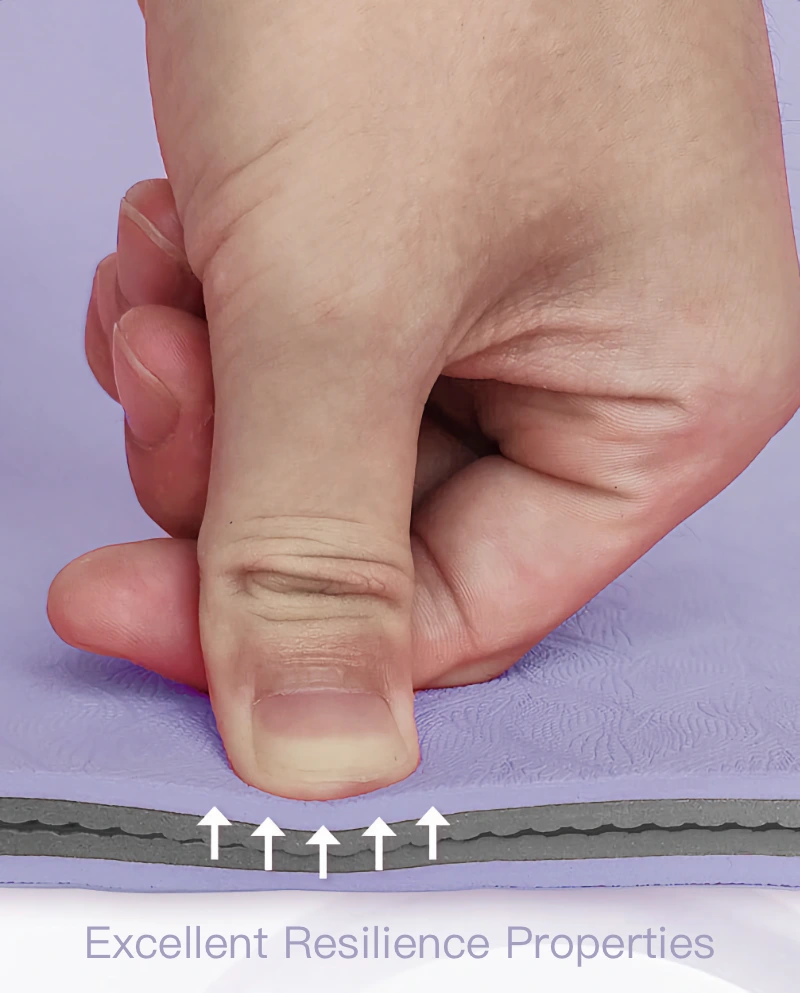
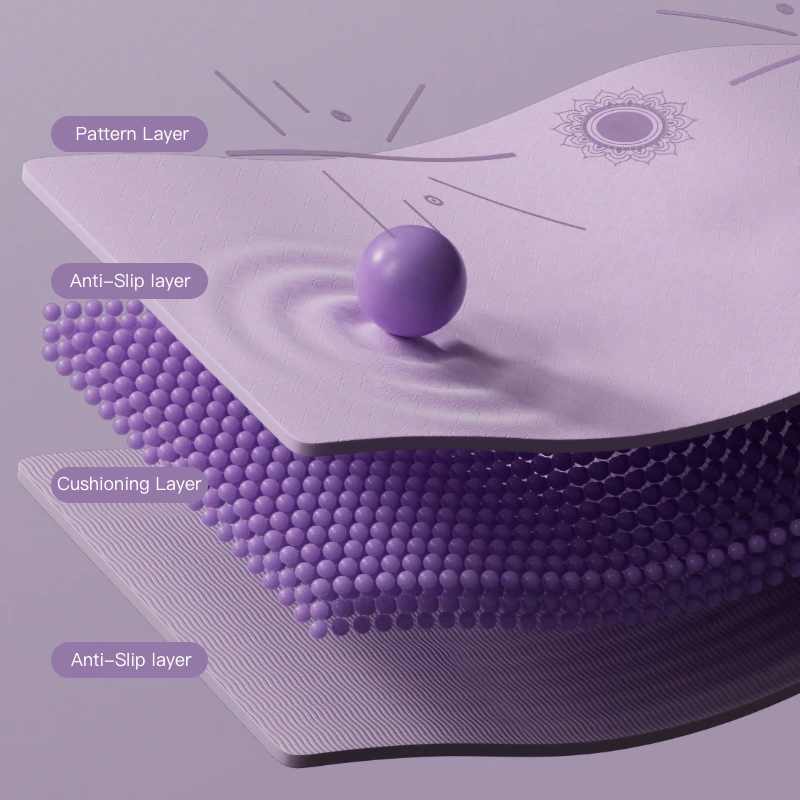
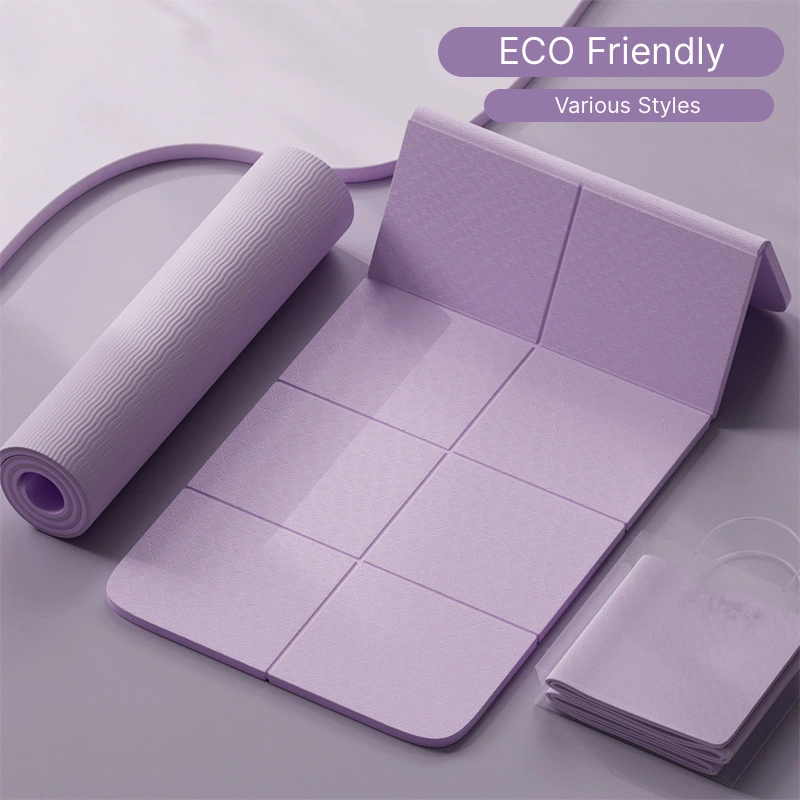
Comparison with Other Materials
When compared to other common yoga mat materials such as PVC (polyvinyl chloride) and natural rubber, TPE offers several distinct advantages. PVC mats, while affordable and widely available, often contain harmful chemicals like phthalates and heavy metals, which can be detrimental to both health and the environment. Natural rubber mats, on the other hand, are eco-friendly but can be heavy, have a strong odor, and may cause allergies in some individuals.
TPE yoga mats bridge the gap between these two materials by being both eco-friendly and user-friendly. They are free from harmful chemicals, lightweight, and hypoallergenic, making them suitable for a wide range of users.
Environmental Benefits of TPE
One of the standout features of TPE is its environmental friendliness. TPE yoga mats are made from non-toxic materials and are fully recyclable. Unlike PVC mats, which can take hundreds of years to decompose and release toxic substances into the environment, TPE mats break down much more quickly and safely. This biodegradable property makes TPE an excellent choice for eco-conscious consumers who are looking to reduce their environmental footprint.
Moreover, the production process of TPE involves fewer harmful emissions and less energy consumption compared to the manufacturing of PVC. This further underscores TPE’s advantages from an environmental perspective.
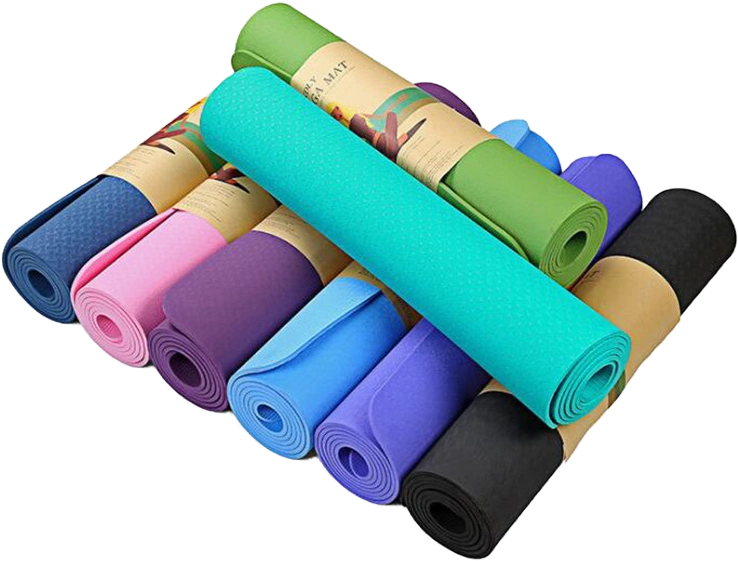
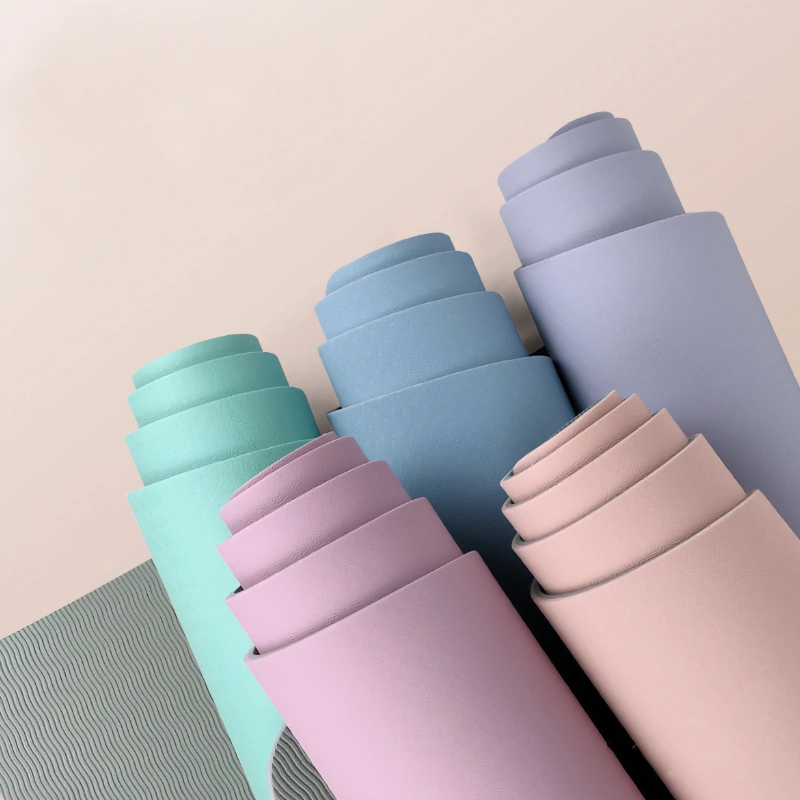
Benefits of TPE Yoga Mats
Choosing the right yoga mat can significantly impact your practice, and TPE (Thermoplastic Elastomers) yoga mats offer a range of benefits that make them an excellent choice for yogis of all levels.
Eco-Friendliness
One of the most compelling reasons to choose a TPE yoga mat is its eco-friendly nature. TPE is a biodegradable material, meaning that it can break down more quickly and safely in the environment compared to traditional PVC mats. This helps reduce your ecological footprint. Additionally, TPE yoga mats are made without the use of toxic chemicals, making them a healthier option for both you and the planet. They are free from harmful substances such as phthalates, heavy metals, and latex, which can cause allergies and other health issues.
Durability and Resilience
TPE yoga mats are known for their exceptional durability and resilience. The material’s high elasticity allows it to withstand frequent use and maintain its shape over time. Unlike PVC mats that can wear out and break down after extensive use, TPE mats are designed to be more resistant to tearing and deformation. This longevity ensures that your investment in a TPE yoga mat will last, providing consistent performance throughout its lifespan.
Comfort and Performance
Comfort is crucial for an effective yoga practice, and TPE yoga mats excel in this area. They offer superior cushioning and support, which helps to protect your joints and enhance your overall comfort during practice. The material’s excellent shock absorption properties make it ideal for performing a variety of poses, from gentle stretches to more dynamic movements.
Lightweight and Portable
Despite their durability and high performance, TPE yoga mats are lightweight and easy to transport. This makes them a great option for yogis who travel frequently or attend classes at different locations. The portability of TPE mats ensures that you can maintain your practice wherever you go without the hassle of lugging around a heavy mat.
Variety of Options
TPE yoga mats come in a wide range of thicknesses, sizes, colors, and designs. This variety allows you to choose a mat that best suits your personal preferences and needs. Whether you prefer a thicker mat for extra cushioning or a thinner mat for closer contact with the ground, there’s a TPE yoga mat for everyone. The aesthetic appeal of these mats, with their vibrant colors and stylish designs, also adds a touch of personal expression to your practice.
Easy to Clean and Maintain
Maintaining a clean yoga mat is essential for hygiene and longevity. TPE yoga mats are easy to clean and maintain, as they do not absorb moisture or odors like some other materials. Regular cleaning with mild soap and water is usually sufficient to keep your mat fresh and free from bacteria. Additionally, TPE mats dry quickly, ensuring that they are ready for use in no time.
Non-Slip Surface for Better Grip
One of the essential features of a yoga mat is its ability to provide a stable, non-slip surface. TPE mats excel in this area, offering excellent traction that helps prevent slipping and sliding during practice. This is particularly important for maintaining proper alignment and safety, especially in poses that require balance and stability. The non-slip surface ensures that you can practice with confidence, even during more intense or sweaty sessions.
Superior Cushioning and Support
Comfort is paramount in a yoga mat, and TPE mats deliver superior cushioning and support. The material’s high elasticity and resilience provide a comfortable surface that protects your joints and enhances overall comfort during practice. Whether you’re performing gentle stretches or more dynamic movements, the cushioning of a TPE mat helps absorb impact and reduce strain on your body.
Hypoallergenic and Non-Toxic
TPE yoga mats are hypoallergenic and free from harmful chemicals, making them a safe choice for individuals with sensitivities or allergies. They do not contain PVC, latex, or heavy metals, which are commonly found in other types of mats and can cause health issues. This feature is especially beneficial for those who have skin sensitivities or are concerned about their exposure to toxins during their practice.
Choosing the Right TPE Yoga Mat
Selecting the perfect TPE (Thermoplastic Elastomers) yoga mat can significantly enhance your practice, providing you with the comfort and support you need. Here are some key factors to consider when choosing the right TPE yoga mat for your needs:
Thickness
The thickness of your yoga mat plays a crucial role in your overall comfort and support. TPE mats are available in various thicknesses, typically ranging from 3mm to 8mm.
- Thinner Mats (3mm-4mm): Ideal for those who prefer a closer connection to the floor, which can be beneficial for balance and stability. Thinner mats are also lighter and more portable, making them suitable for yogis who travel frequently.
- Thicker Mats (5mm-8mm): Provide extra cushioning, which can be particularly beneficial for those with sensitive joints or those who practice on hard surfaces. Thicker mats offer more comfort during seated and supine poses, making them ideal for restorative or yin yoga practices.
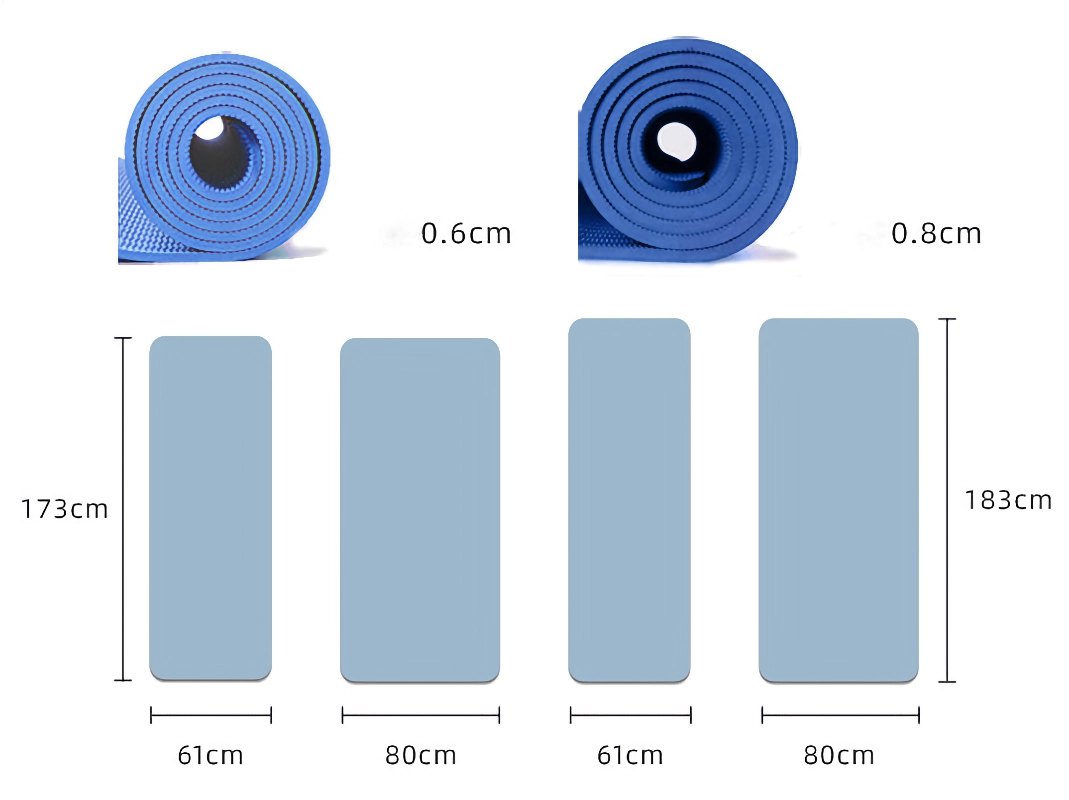
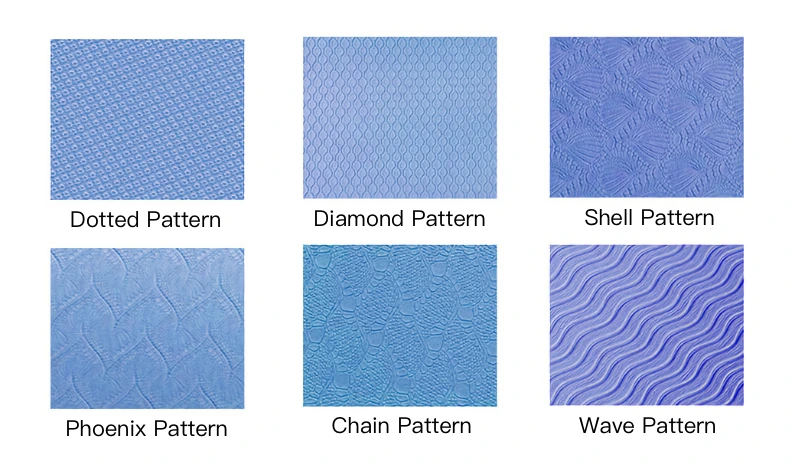
Size
Yoga mats come in different sizes, so it’s important to choose one that fits your body and practice style. Standard mats are usually around 68 inches long and 24 inches wide. However, taller individuals or those who prefer more space might opt for longer and wider mats.
- Standard Size: Suitable for most practitioners and sufficient for a variety of poses.
- Longer and Wider Mats: Offer more space for movement and can be more comfortable for taller individuals.
Texture and Surface
The texture of the mat affects grip and comfort. TPE mats are generally designed with a non-slip surface, but the level of texture can vary.
- Smooth Mats: Provide a softer feel and are generally easier to clean. They are suitable for gentle practices or those who prioritize comfort.
- Textured Mats: Offer more grip, which can be beneficial for dynamic and sweaty practices like Vinyasa or hot yoga. The added texture helps prevent slipping and ensures stability during challenging poses.
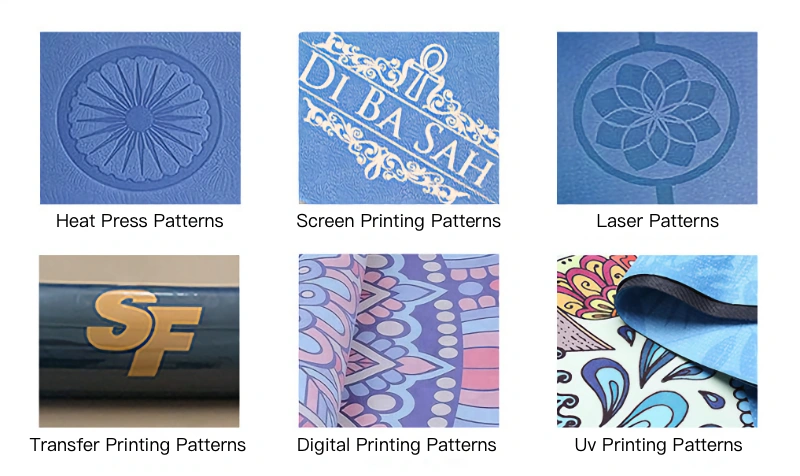
Personal Preferences and Yoga Style Compatibility
- Yoga Style: Different yoga styles may require different types of mats. Consider your primary yoga style when selecting a TPE mat.
- Hatha or Iyengar Yoga: These styles often involve holding poses for longer periods, so a thicker mat with good cushioning is beneficial.
- Vinyasa or Ashtanga Yoga: These dynamic practices involve more movement and may benefit from a textured, non-slip mat to prevent slipping during transitions.
- Hot Yoga or Bikram Yoga: These styles involve practicing in a heated room, so a mat with superior grip and moisture resistance is essential.
- Personal Comfort: Your personal comfort and preferences play a significant role in choosing the right mat. Consider factors like:
- Sensitivity to Pressure: If you have sensitive joints or find hard surfaces uncomfortable, opt for a thicker mat.
- Preference for Portability: If you travel frequently or attend classes outside your home, a lightweight and easily portable mat is essential.
- Aesthetic Preferences: The appearance of your yoga mat can also impact your motivation and enjoyment of your practice. TPE mats come in a variety of colors and designs, allowing you to choose one that resonates with you.
Tips for Beginners and Advanced Practitioners
- Beginners
- Prioritize Comfort: As a beginner, comfort is crucial. Choose a mat that provides adequate cushioning to protect your joints.
- Non-Slip Surface: A non-slip surface can help prevent injuries and build confidence as you learn new poses.
- Advanced Practitioners
- Consider Durability: Advanced practitioners often practice more frequently, so a durable mat that can withstand regular use is important.
- Tailored Features: Look for mats with features that cater to your specific needs, such as extra length for taller individuals or superior grip for more challenging poses.
Product Gallery
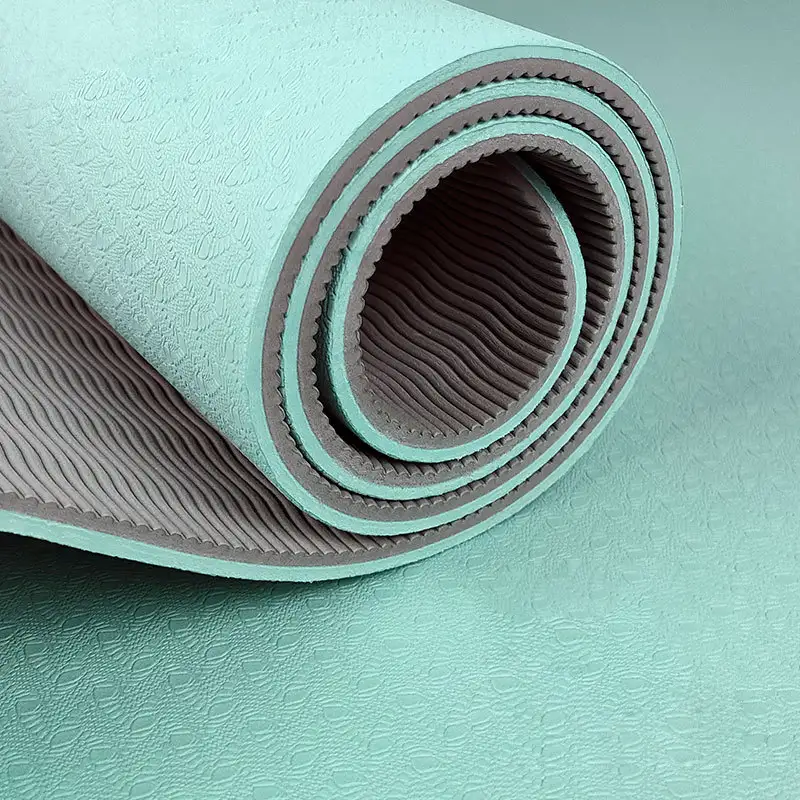
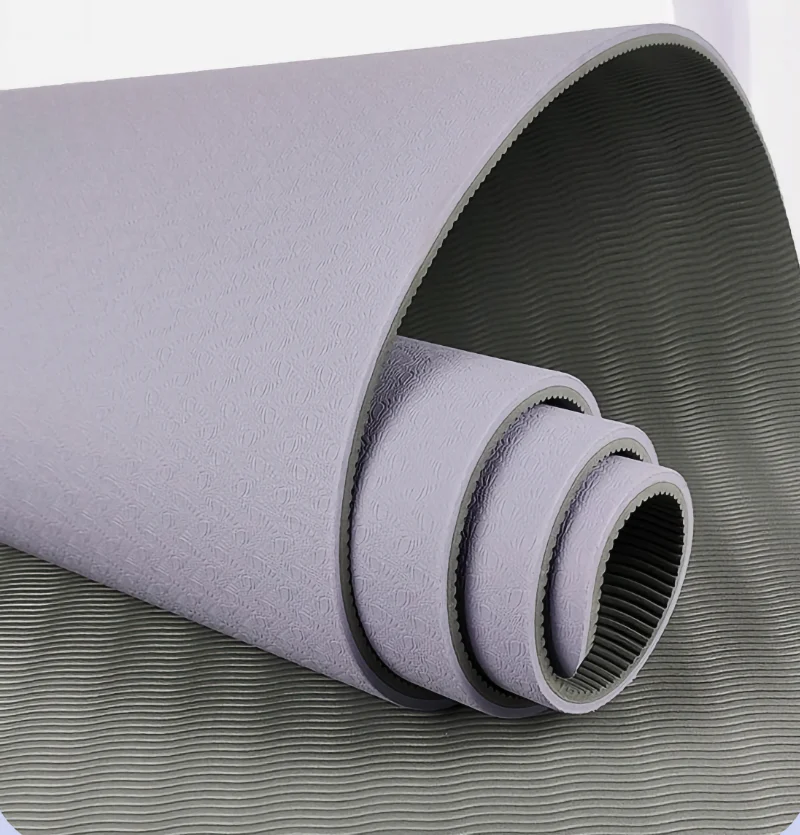
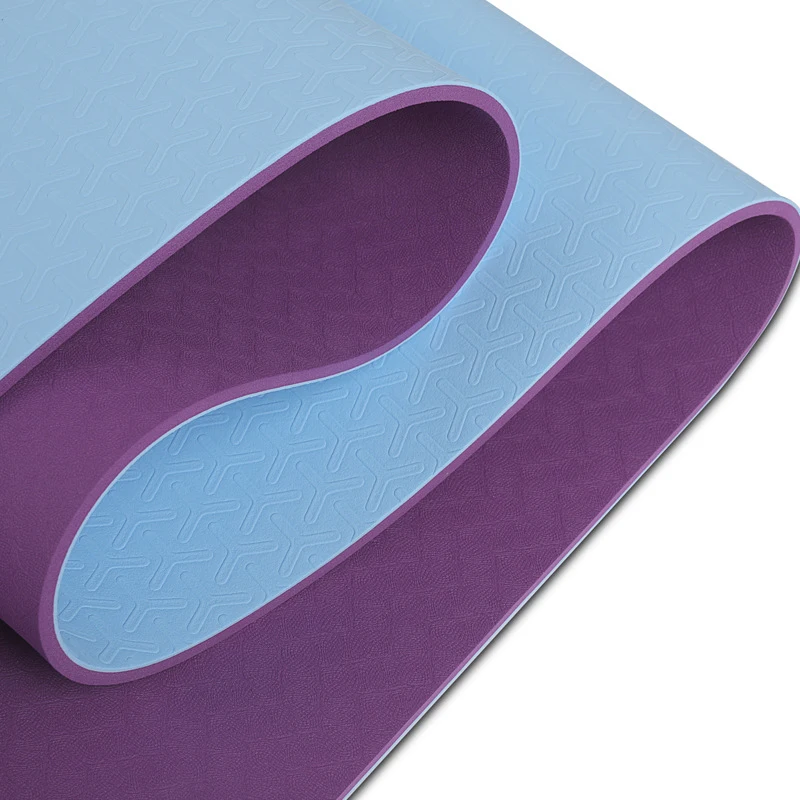
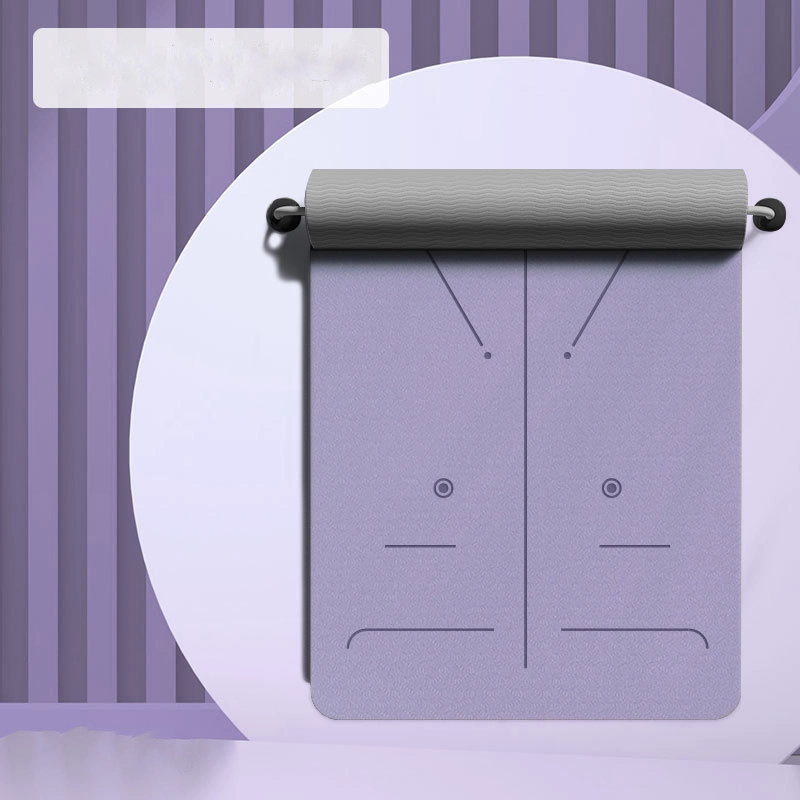
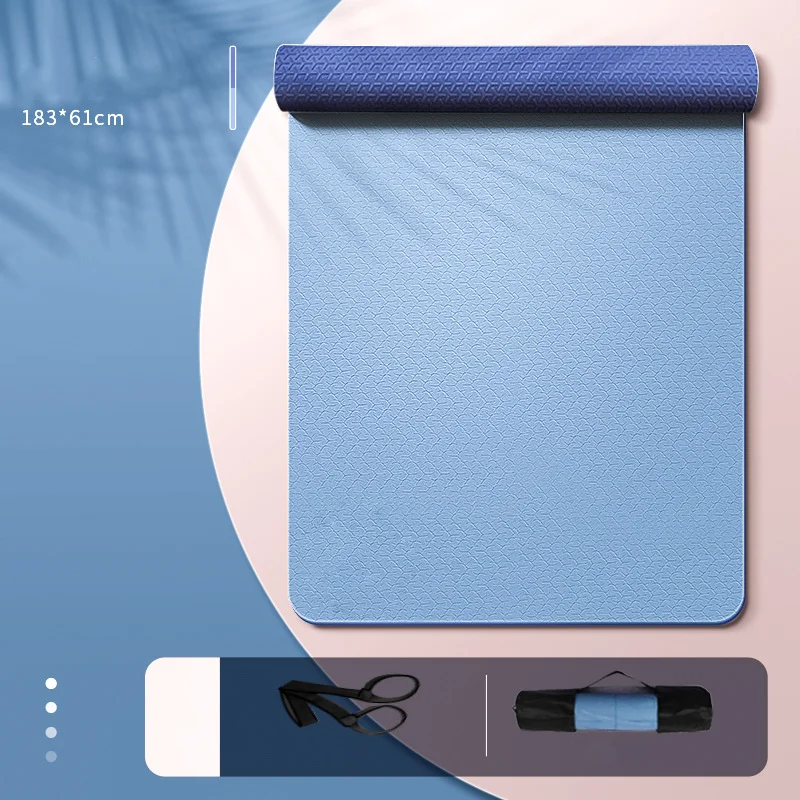
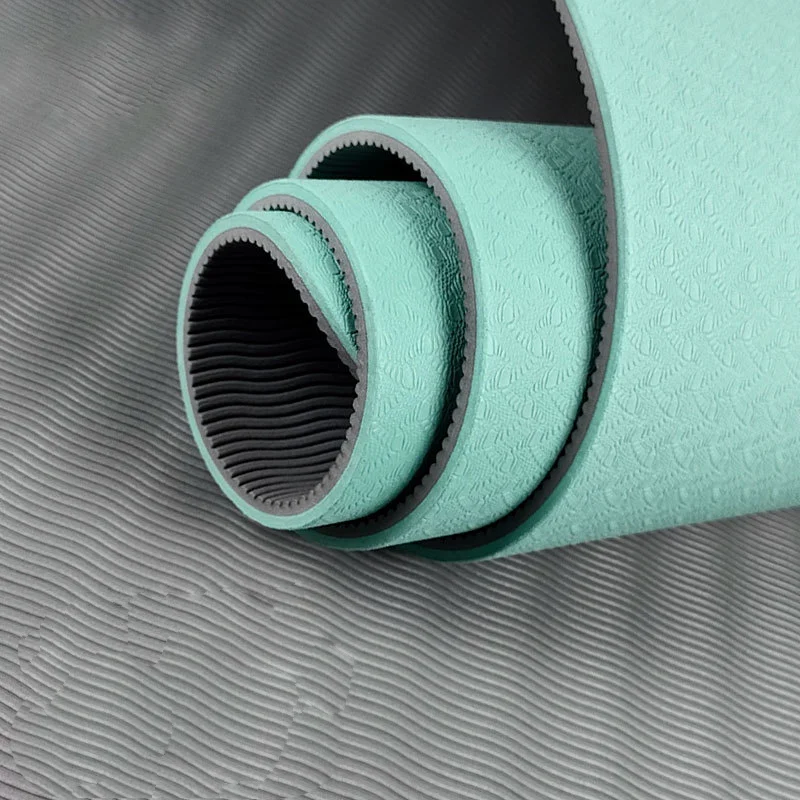
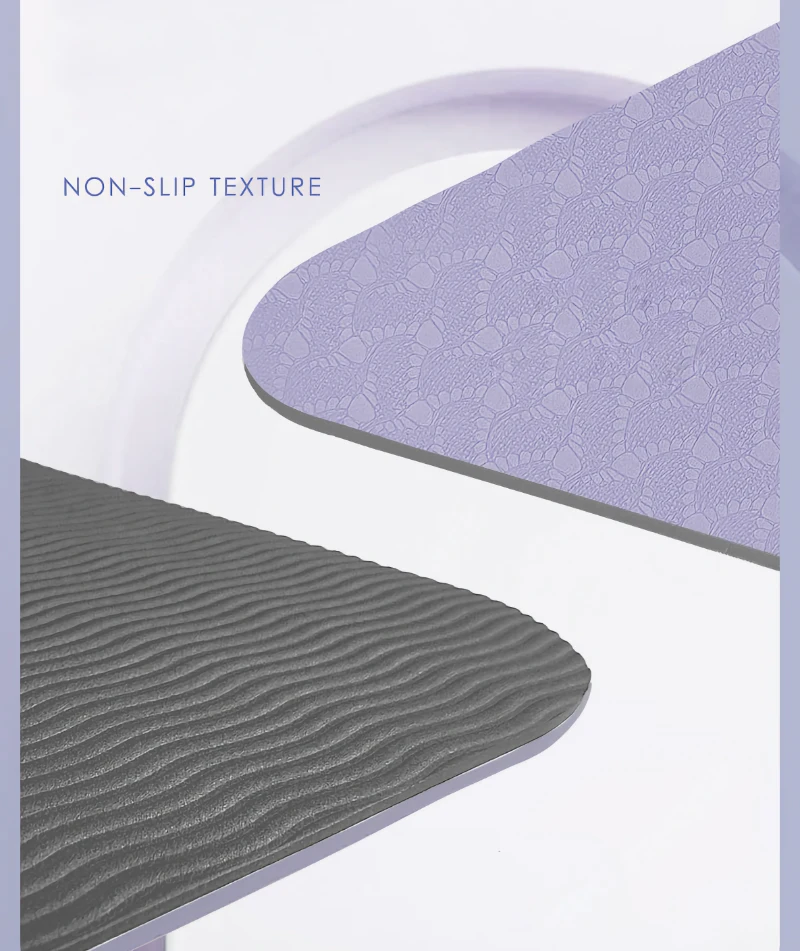
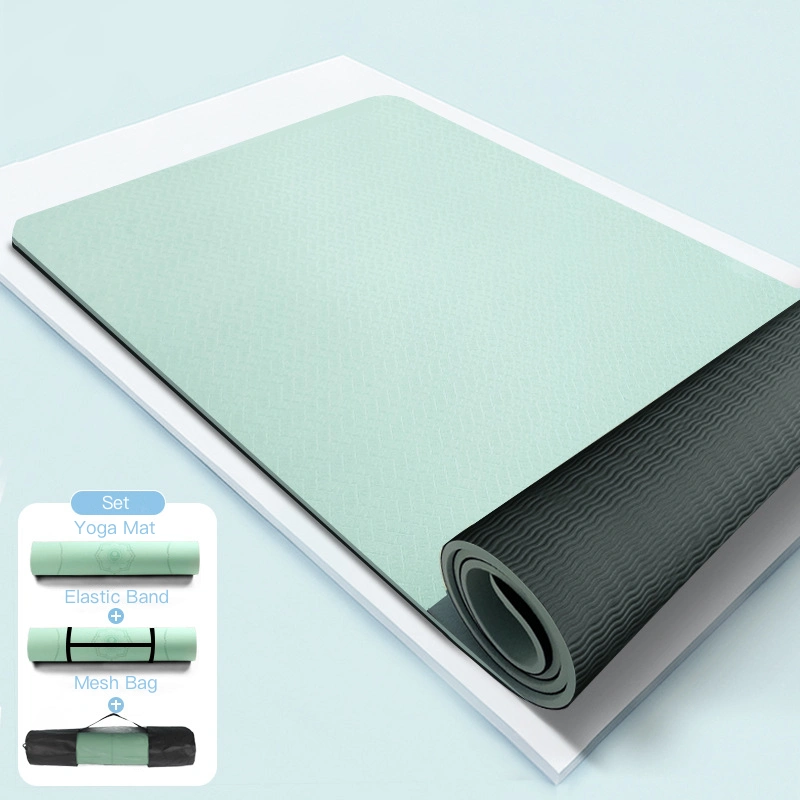
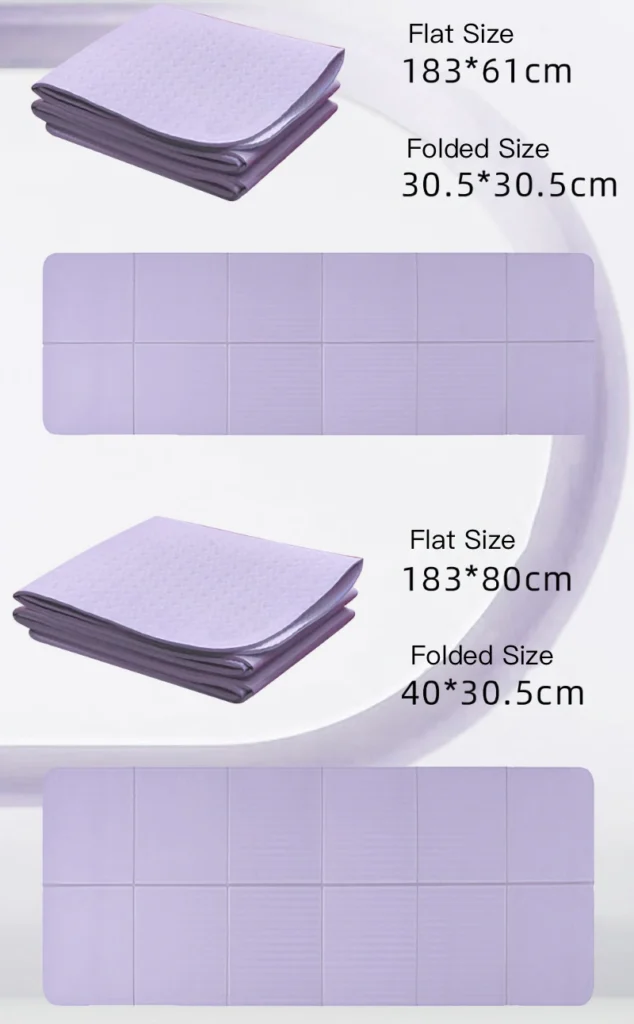
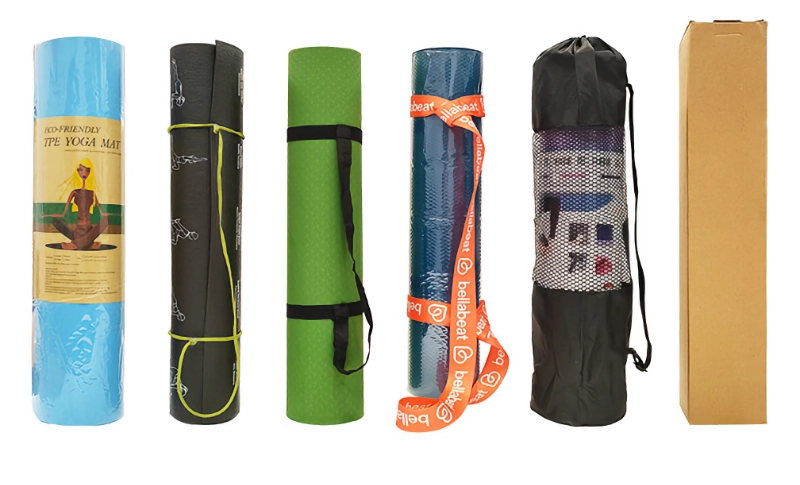
Caring for Your TPE Yoga Mat
Proper care and maintenance of your TPE (Thermoplastic Elastomers) yoga mat can significantly extend its lifespan and ensure a clean and comfortable practice. Here are some essential tips for caring for your TPE yoga mat:
Cleaning and Maintenance Tips
- Regular Cleaning: Regular cleaning is essential to keep your mat free from dirt, sweat, and bacteria. Here’s how to clean your TPE yoga mat:
- Light Cleaning: After each practice, wipe down your mat with a damp cloth or a gentle, non-toxic yoga mat cleaner. This helps remove surface sweat and grime.
- Deep Cleaning: For a more thorough cleaning, mix a solution of mild soap (like dish soap) and warm water. Use a soft cloth or sponge to gently scrub the mat, then rinse with clean water. Avoid using harsh chemicals or abrasive scrubbers, as these can damage the mat’s surface.
- Drying Your Mat: After cleaning, it’s crucial to dry your mat properly to prevent mold and mildew growth:
- Air Dry: Lay the mat flat or hang it over a shower rod or clothesline to air dry. Ensure both sides are fully dry before rolling it up for storage.
- Avoid Direct Sunlight: Prolonged exposure to direct sunlight can cause the material to degrade. Dry your mat in a shaded, well-ventilated area.
- Spot Cleaning: For minor stains or spots, use a cloth dampened with water and a small amount of mild soap to gently clean the affected area. Rinse and dry thoroughly.
Proper Storage to Extend Mat Life
- Rolling Your Mat: Properly rolling your mat helps maintain its shape and prevents creases:
- Roll with the Top Side Out: Roll your mat with the practice side (the side you use) facing out. This helps keep the corners from curling up during practice.
- Avoid Folding: Folding your mat can create permanent creases and weaken the material. Always roll it instead of folding.
- Storage Environment: Store your mat in a cool, dry place to preserve its quality:
- Avoid Humidity: Humid environments can promote mold and mildew growth. Store your mat in a dry, well-ventilated area.
- Use a Yoga Mat Bag: A yoga mat bag can protect your mat from dust, dirt, and damage when not in use. It also makes it easier to carry your mat to and from practice.
- Avoid Heavy Objects: Do not place heavy objects on top of your rolled-up mat, as this can cause indentations and affect its shape.
When to Replace Your Mat
Even with proper care, yoga mats will eventually wear out. Here are some signs that it might be time to replace your TPE yoga mat:
- Loss of Thicknes: If your mat becomes noticeably thinner or less supportive, it may no longer provide adequate cushioning for your joints.
- Visible Wear and Tear: Look for signs of wear such as cracks, tears, or peeling. These indicate that the mat’s material is breaking down and may not provide the necessary support and stability.
- Loss of Grip: If your mat starts to lose its non-slip surface and becomes slippery during practice, it can pose a safety risk. A new mat will ensure better traction and stability.
- Persistent Odors: If your mat retains odors even after thorough cleaning, it may be time for a replacement. Lingering odors can indicate that bacteria and other microorganisms have penetrated the mat.
Request Free Samples
Experience Our Products, Your Way
Avail yourself of the opportunity to test our premium samples free of charge. While the samples themselves are provided at no cost, we kindly request recipients to cover the shipping fees. This arrangement allows you to experience the quality and craftsmanship of our products firsthand, ensuring confidence in your wholesale orders. Contact us today to request your complimentary samples and explore the excellence of our products while shouldering only the shipping expenses.